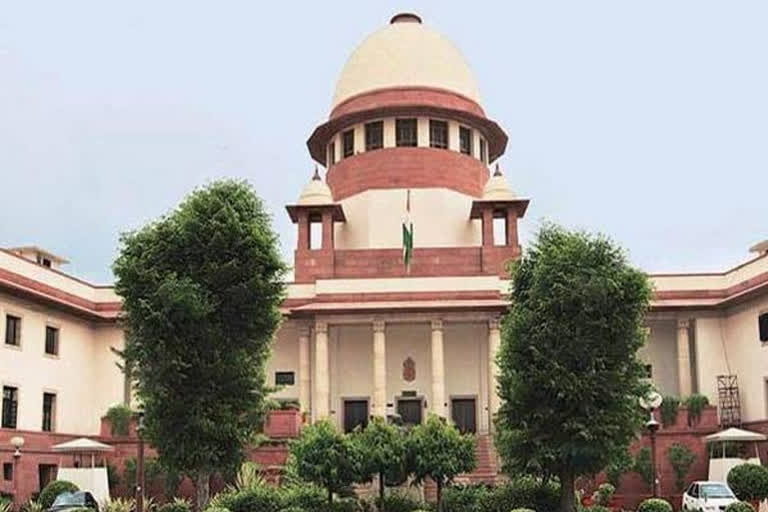New Delhi: The Supreme Court on Tuesday posed searching queries to the Muslim parties about the images of lions, birds and flowers found on the now-demolished structure at the disputed Ram Janmbhoomi-Babri masjid site, seeking to know whether such pictures are found in mosques.
The Muslim parties said that there were no images of God found in any mosque but just because "some flowers and some pictures" have been found, it cannot be said that the site was 'unquranic' and against the Islamic beliefs.
They told the 5-judge Constitution bench, headed by Chief Justice Ranjan Gogoi, that a few pictures of lions, a bird on the 'Singhdwar' (gate) and some flowery images found on 'Kasauti pillars' of the structure do not help the Hindu side in establishing that there was a temple instead of a mosque.
"This (the picture of two lions and one bird taken in 1950) is on the 'Singhdwar'. It has two lions and one 'garuda', the bench said, adding that it wanted to see a "better picture".
"There cannot be images of flowers, animals in a mosque Mr Dhavan, can you make a small note and give us the images of mosques," said the bench, also comprising Justices S A Bobde, D Y Chandrachud, Ashok Bhushan and S A Nazeer, on the 25th day of hearing in the case.
Dhavan, who was arguing on the eighth day on behalf of Sunni Waqf Board and others including original litigant M Siddiq, told the bench that the reliance on these pictures by Hindu parties 'does not prove anything.
"Moreover, we were not called upon to answer this question in the High Court and the point was that there was no direct evidence of any image of a god there", he said.
Nothing had come out of it (pictures of lions and a bird) as some Muslim witnesses had said it was "emblem of Nawab", while some Hindus said that they indicated towards the existence of the temple.
On the lotus symbol, found on the Kasauti pillars, the senior lawyer said that they did not make the structure a temple or part of a temple and moreover, such flowery images were also part of Islamic art the world over.
Dhavan questioned the submissions of Hindu parties on 14 'Kasauti' pillars and various images found on them and said, "Some (witnesses) said that these pillars were lying there, some said that they came from Nepal and some said they came from nearby mining area and few others said that they came from Sri Lanka."
"On Kasauti pillars, there was no direct evidence of any image of God or Goddess on them. This is what I have argued. They (Hindus) will have to show some images of God on them."
Referring to the High Court verdict, he said that there were no such findings in the judgement and referred to Qutab Minar and said that there are temple inscriptions on it.
"The question is that whether such images are there in any mosque," Justice Bobde asked.
If a 'Sultan' or 'Nabab' or a King gave a "un-Islamic" or "Unquranic" edict, the structure does not become "un-Islamic", Dhavan said, adding that there were no images on the west wall of structure and Muslims pray with their face towards the west.
